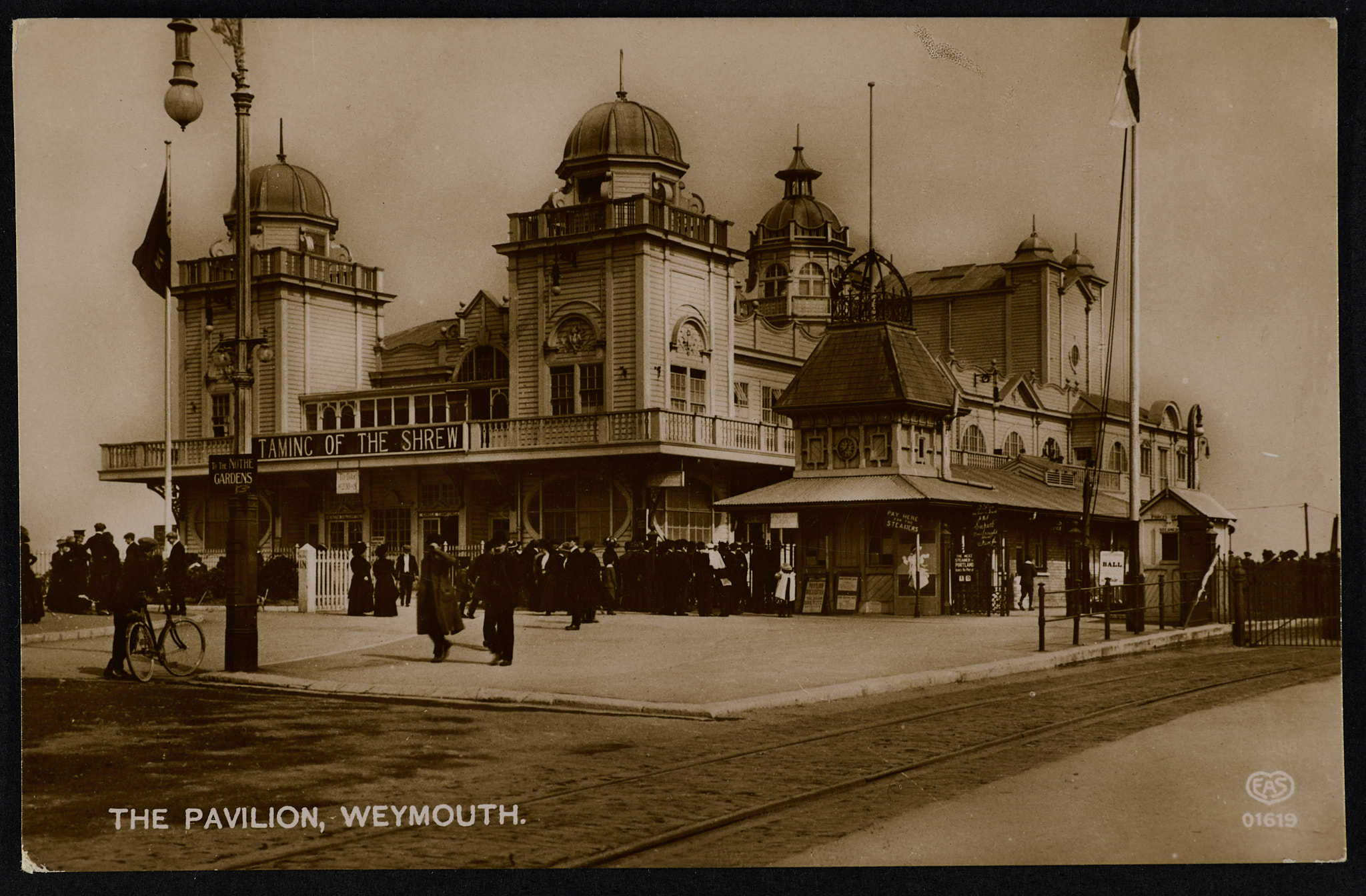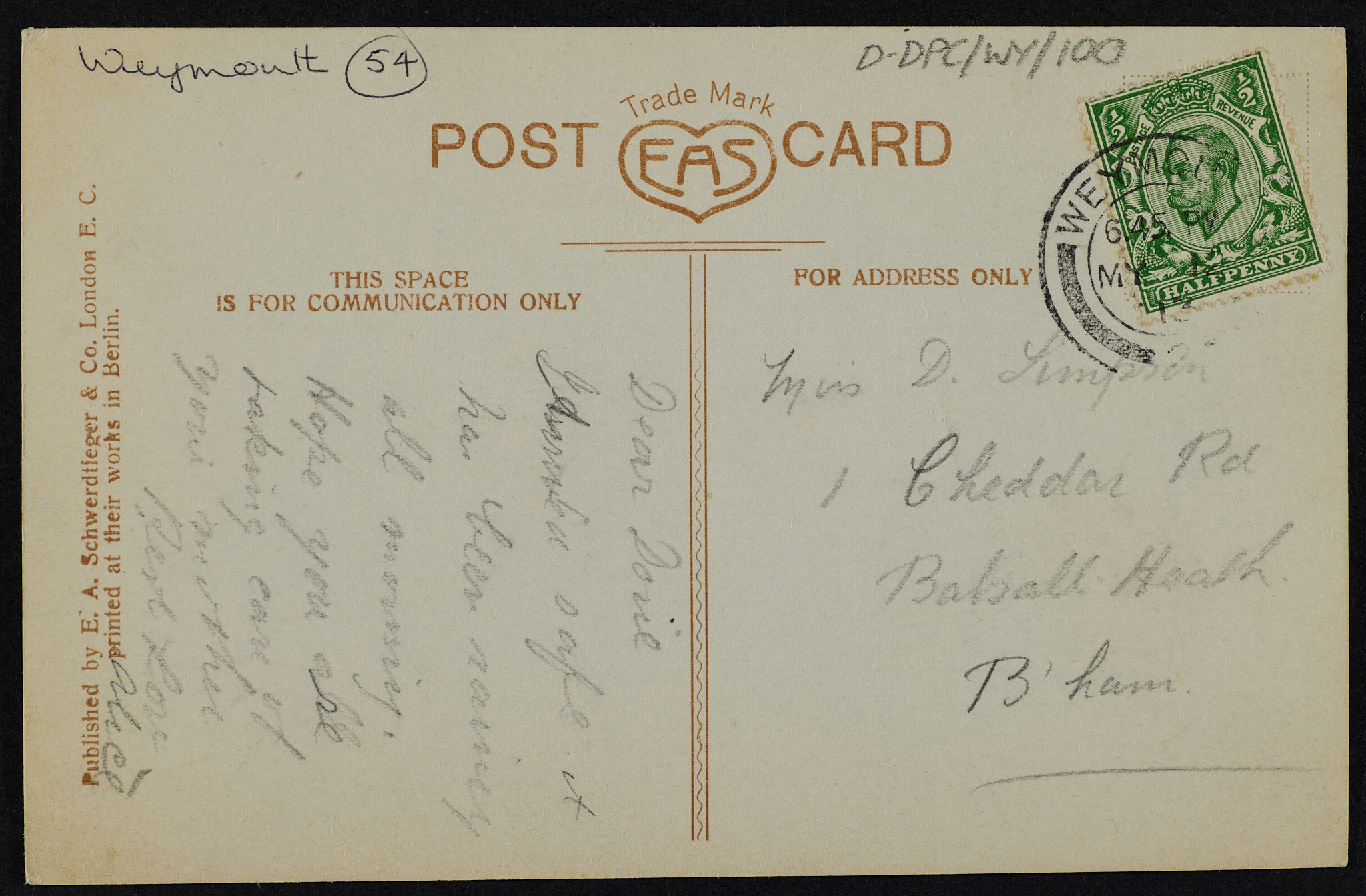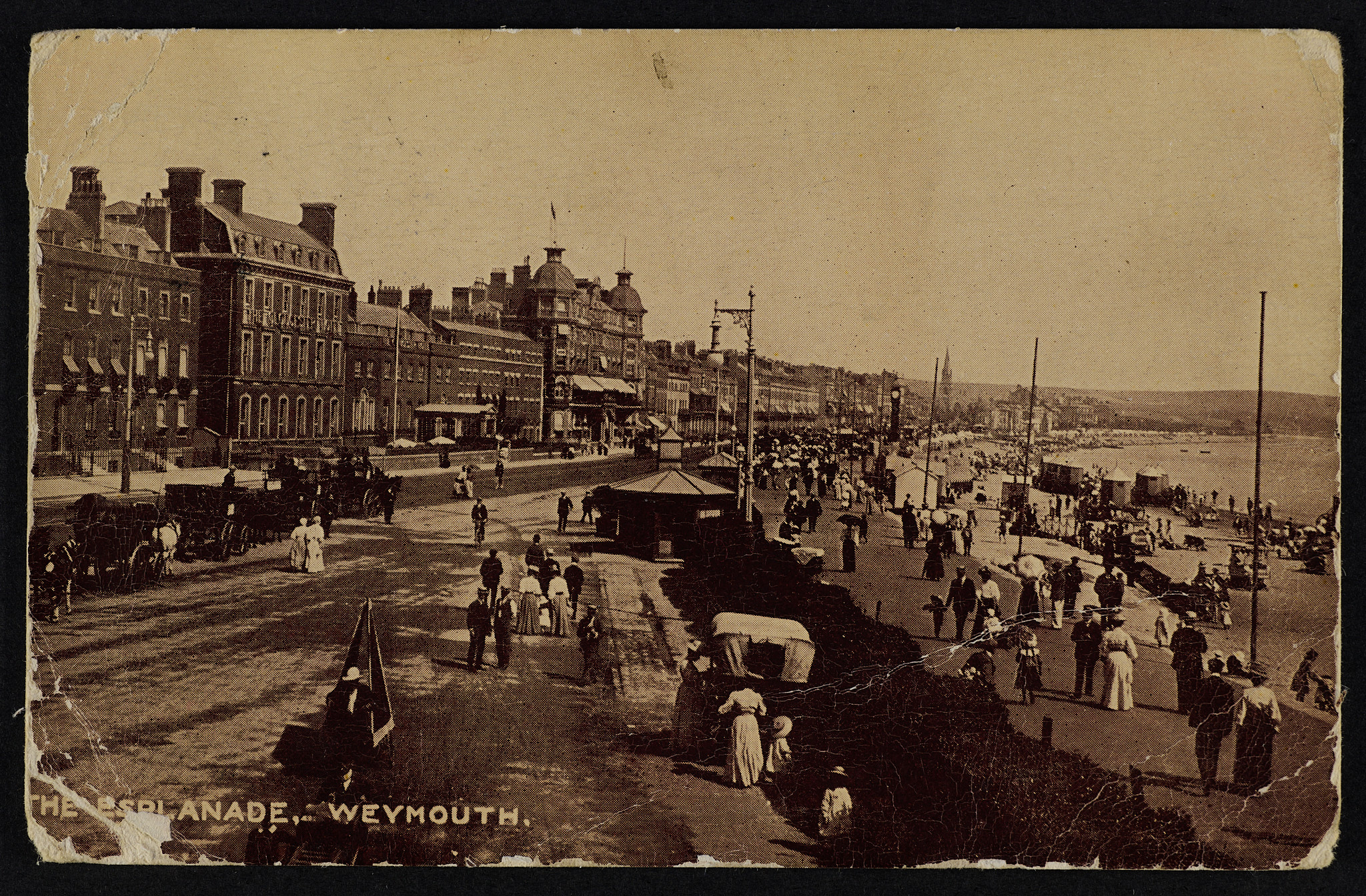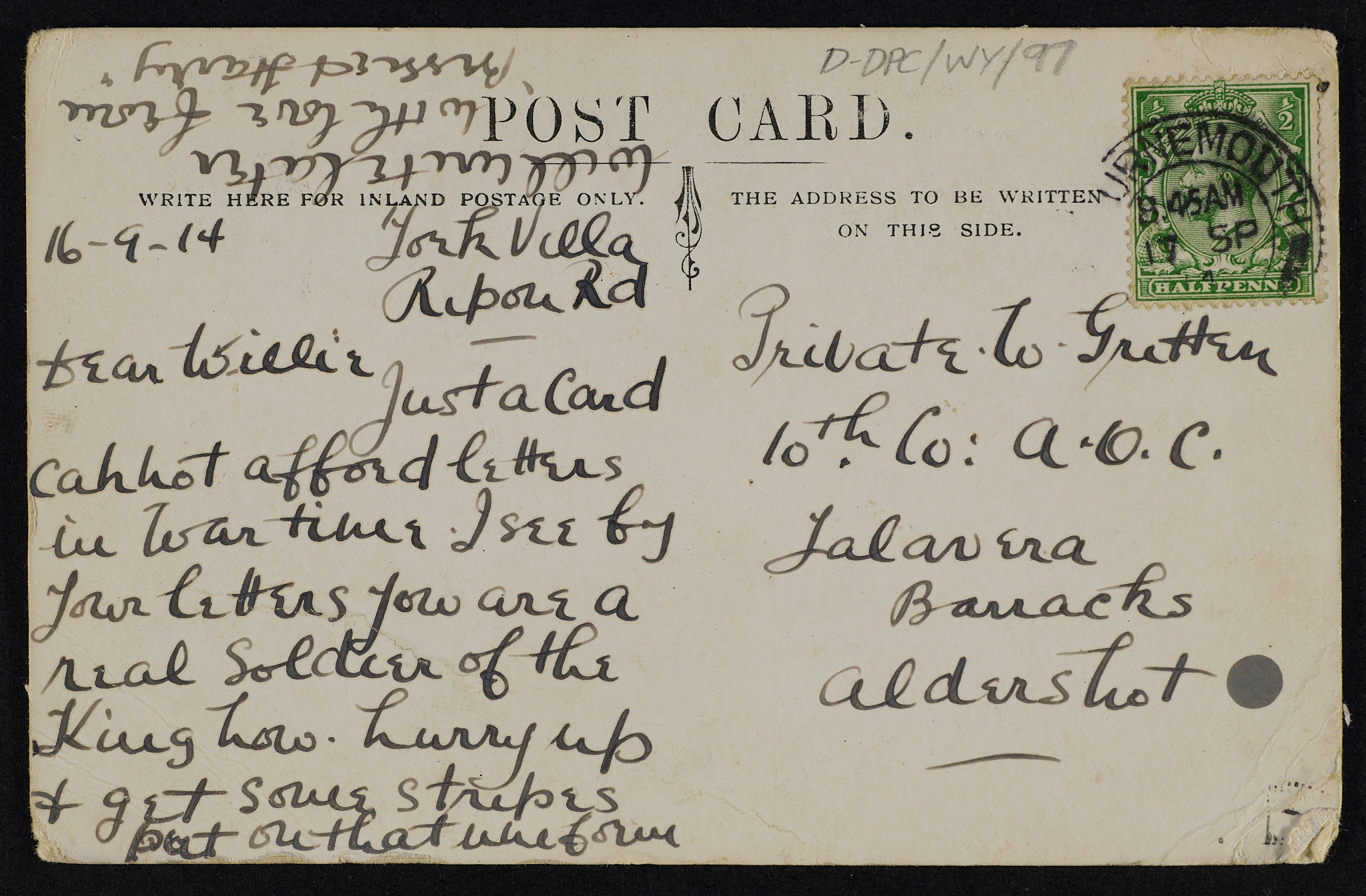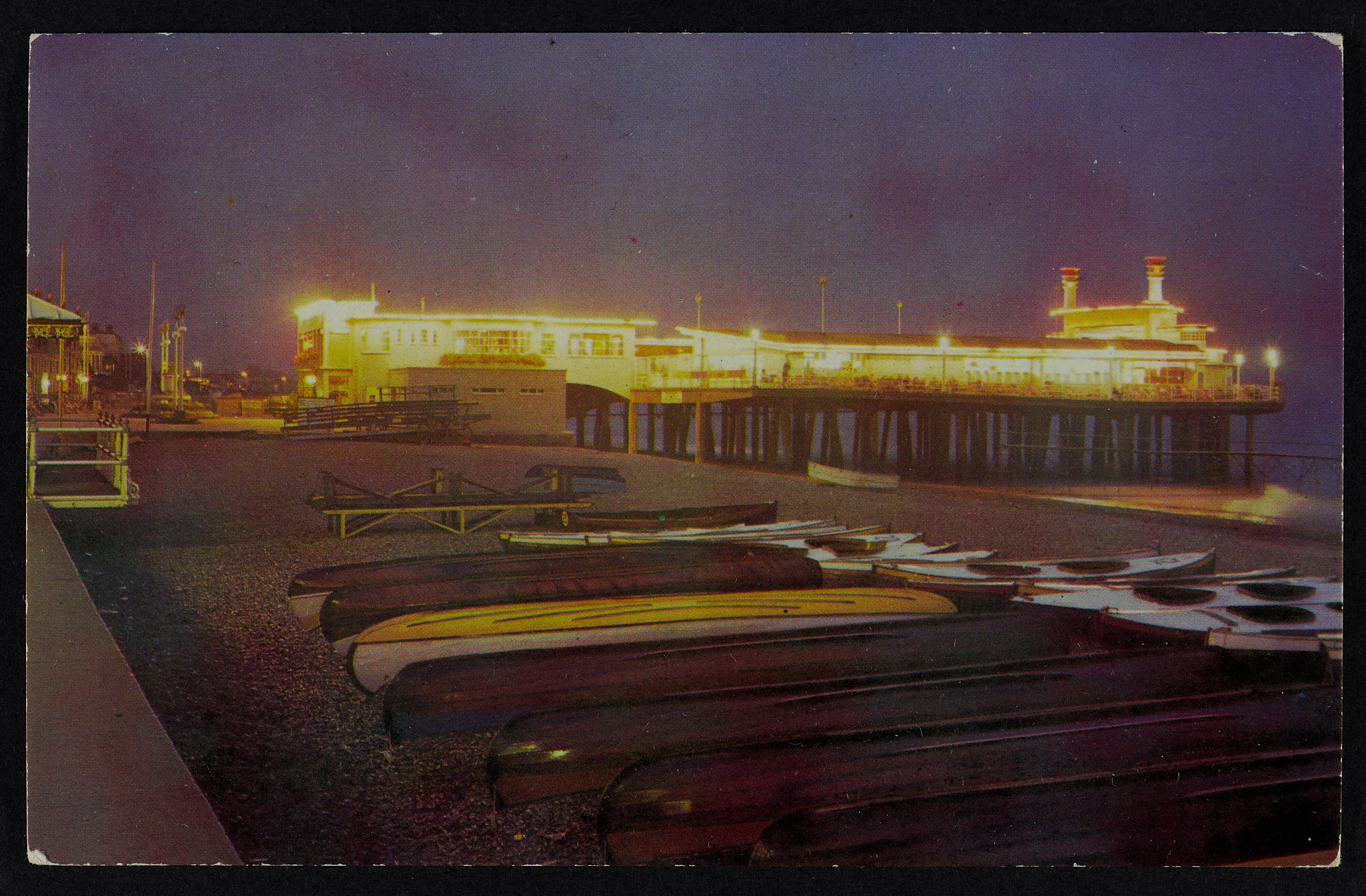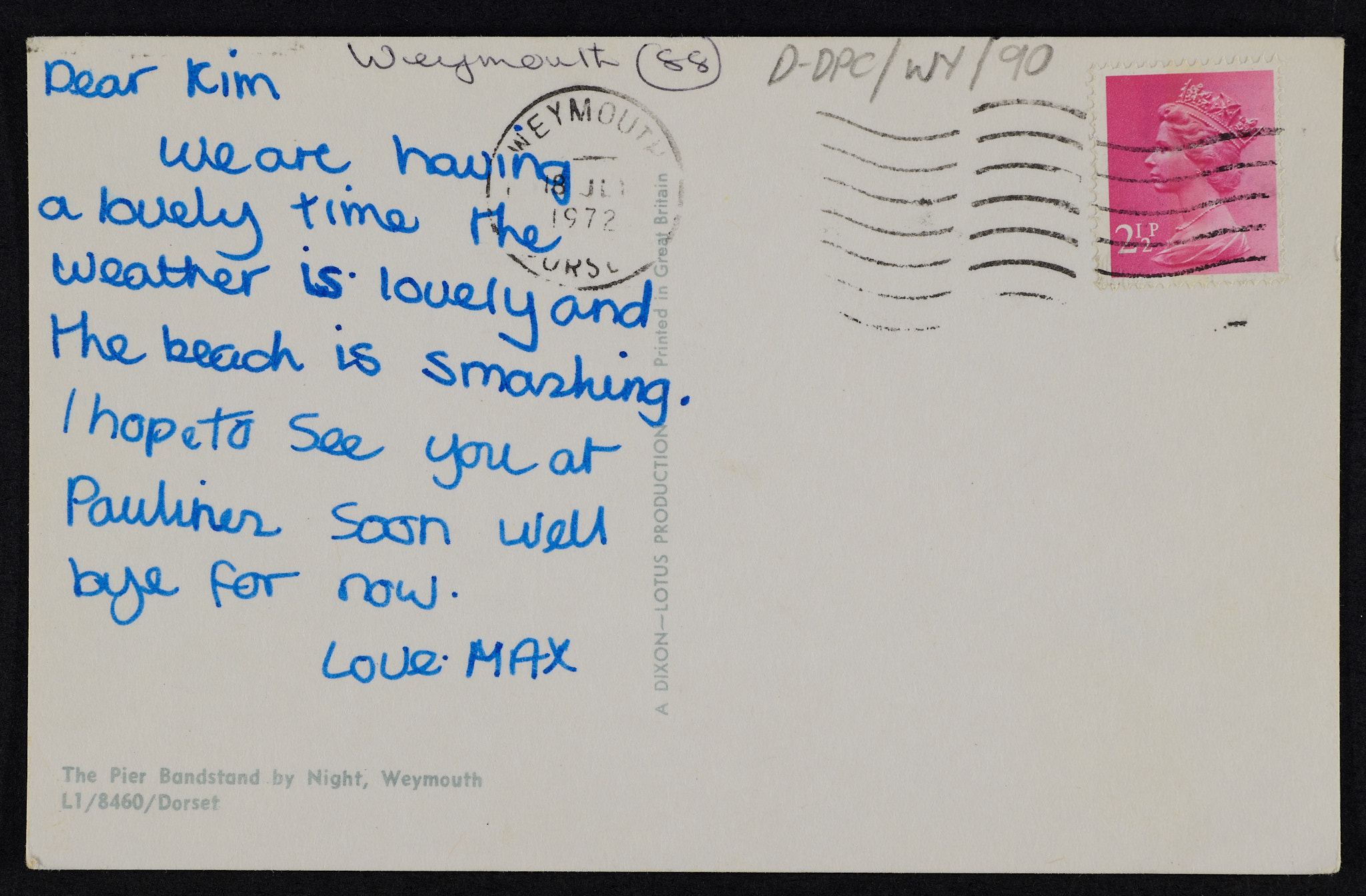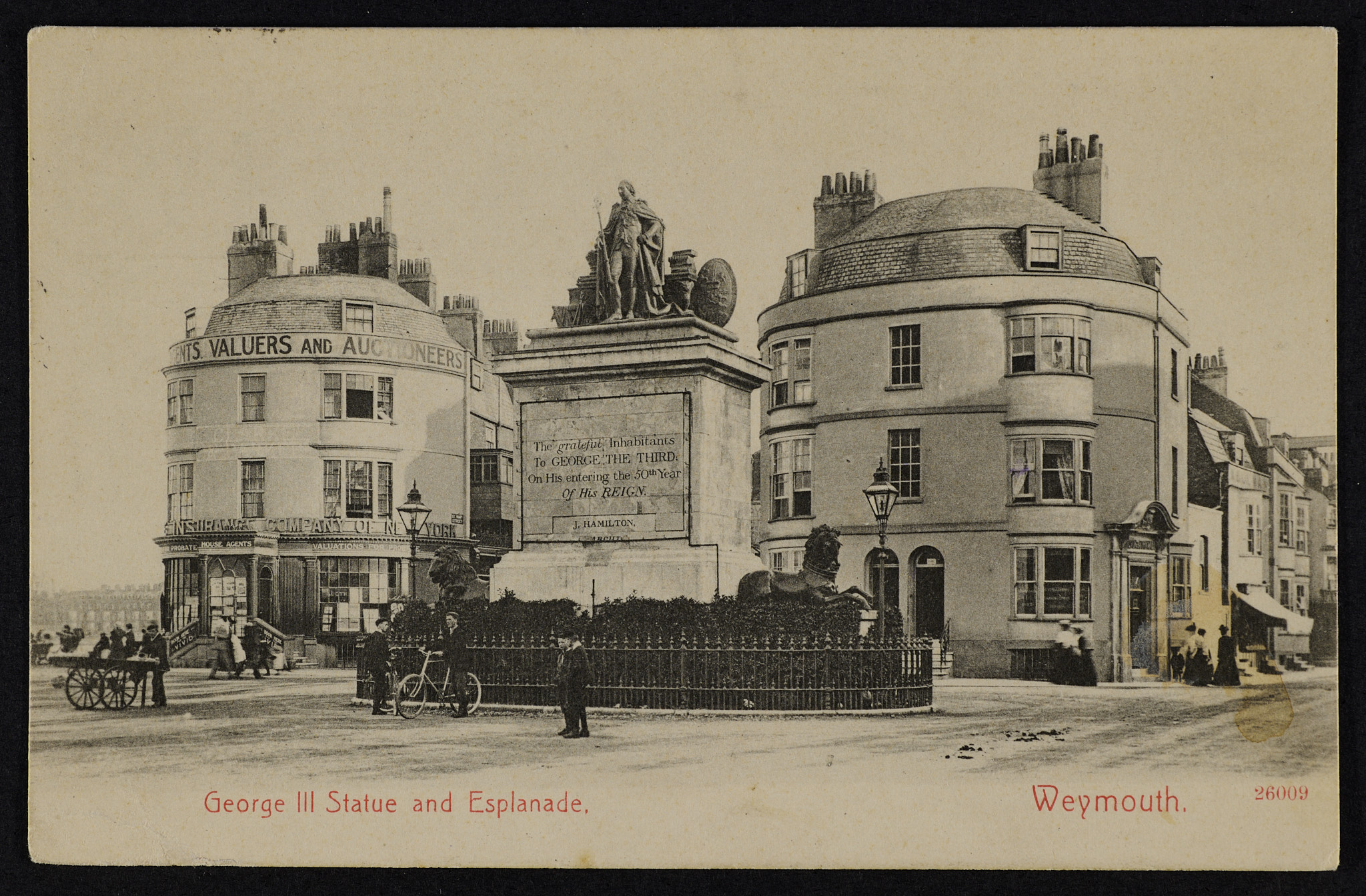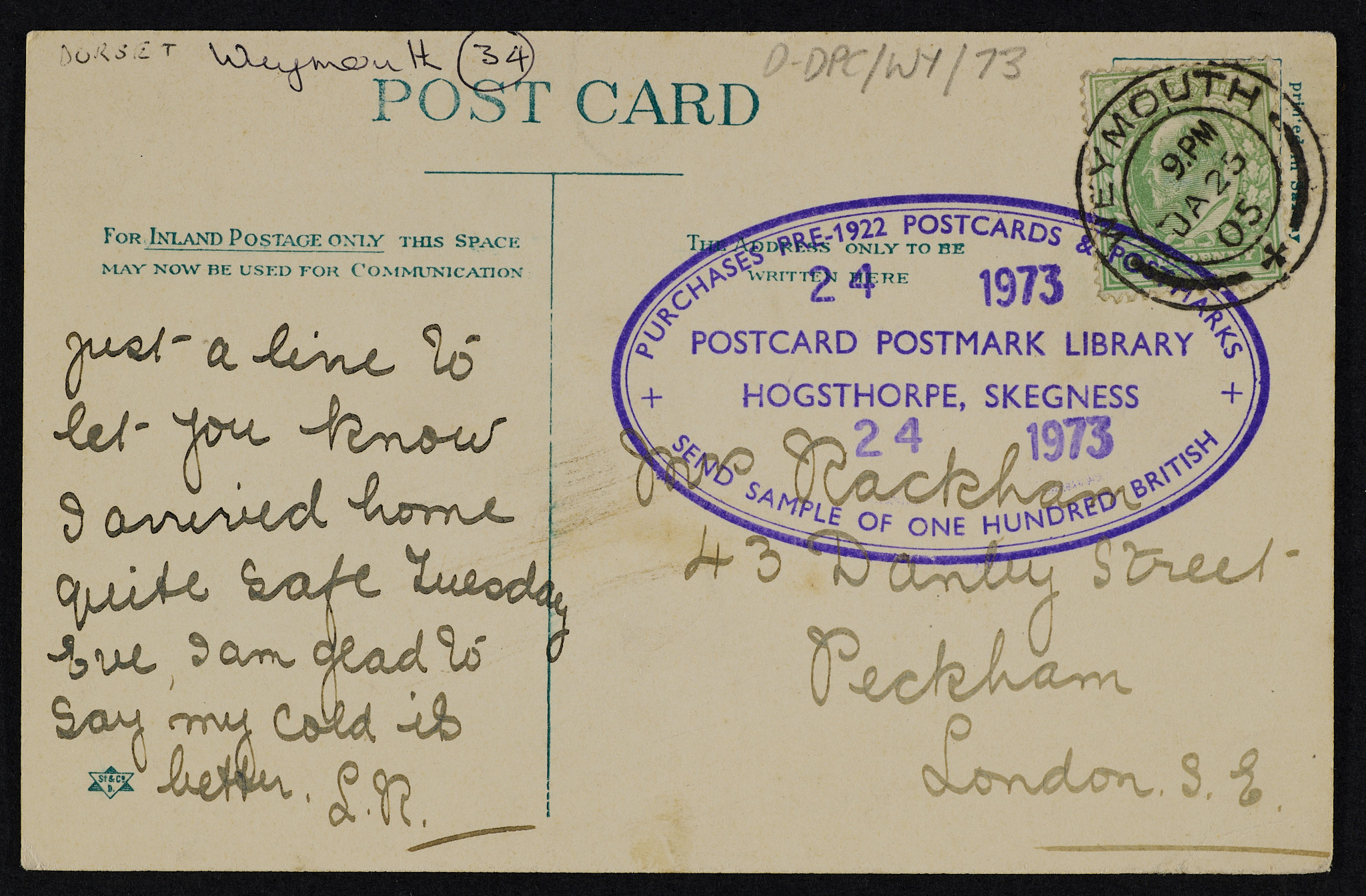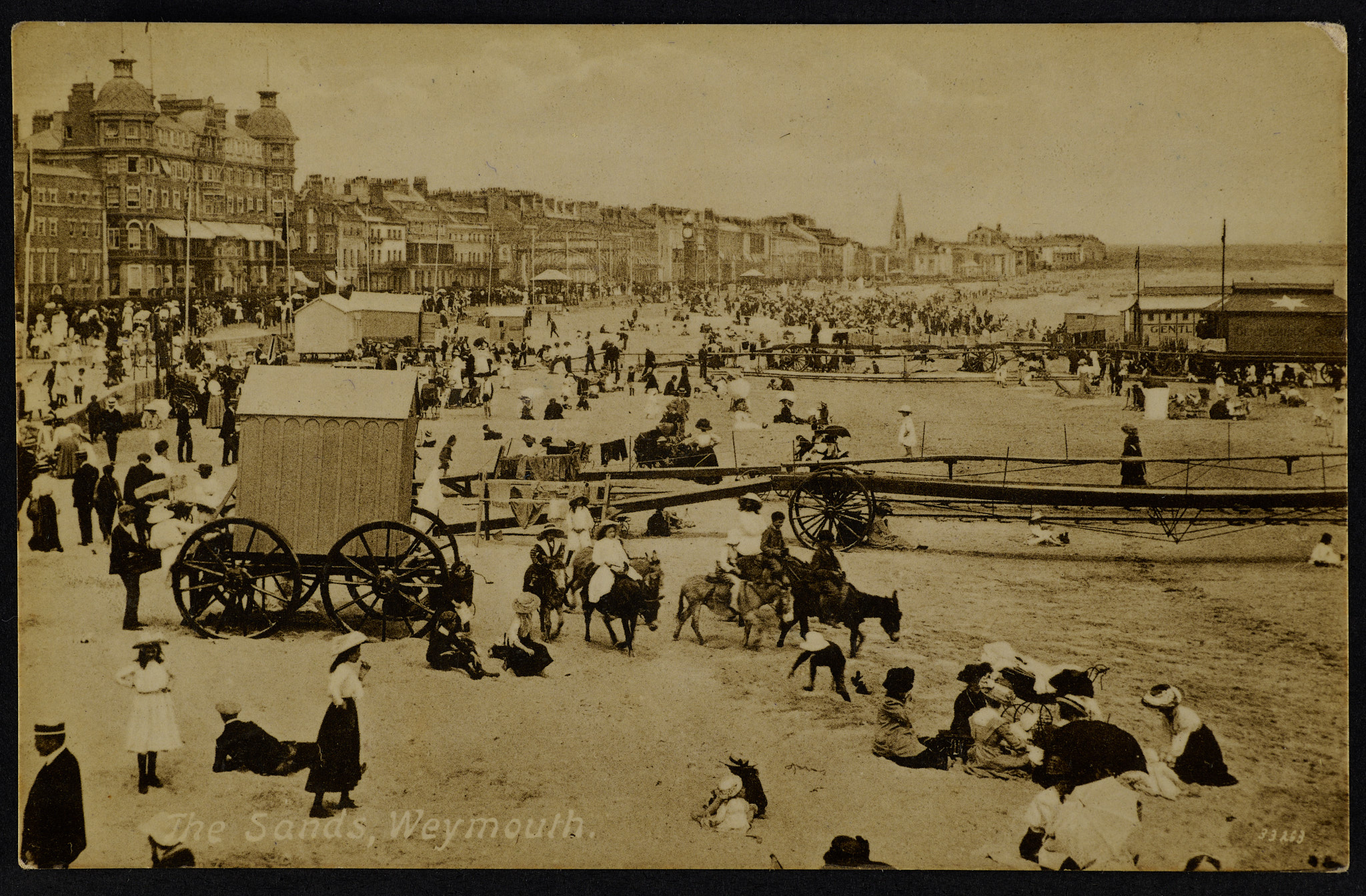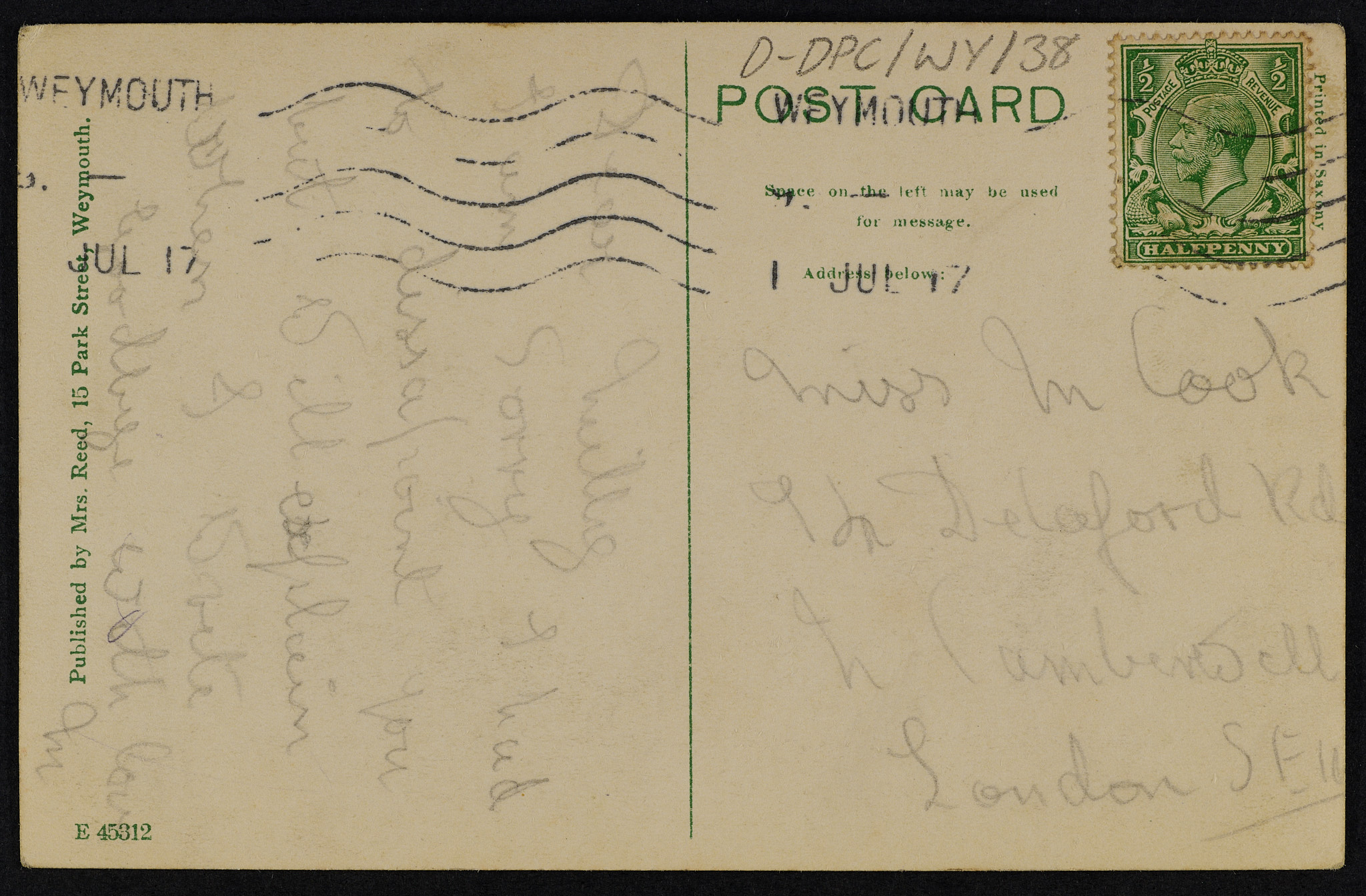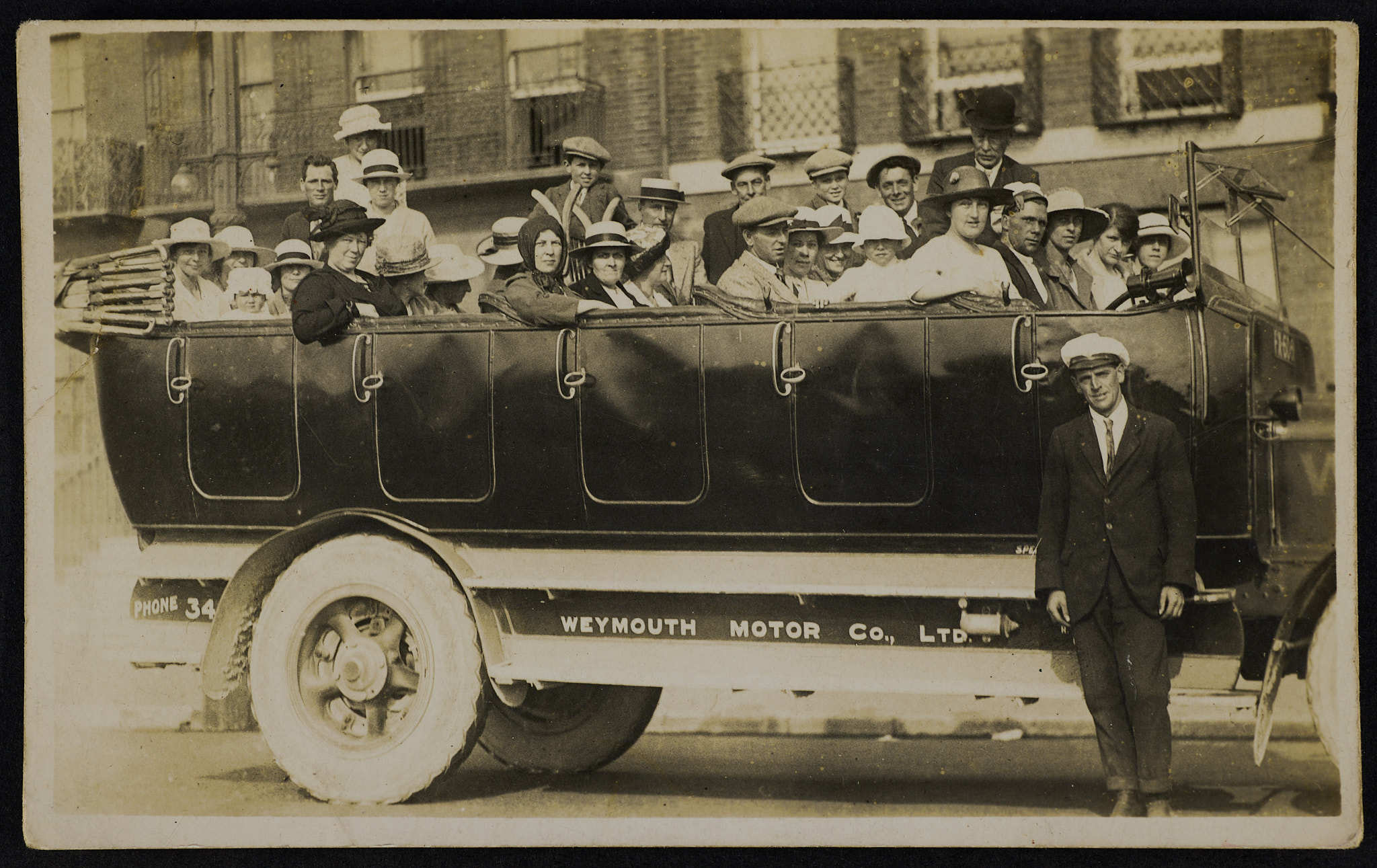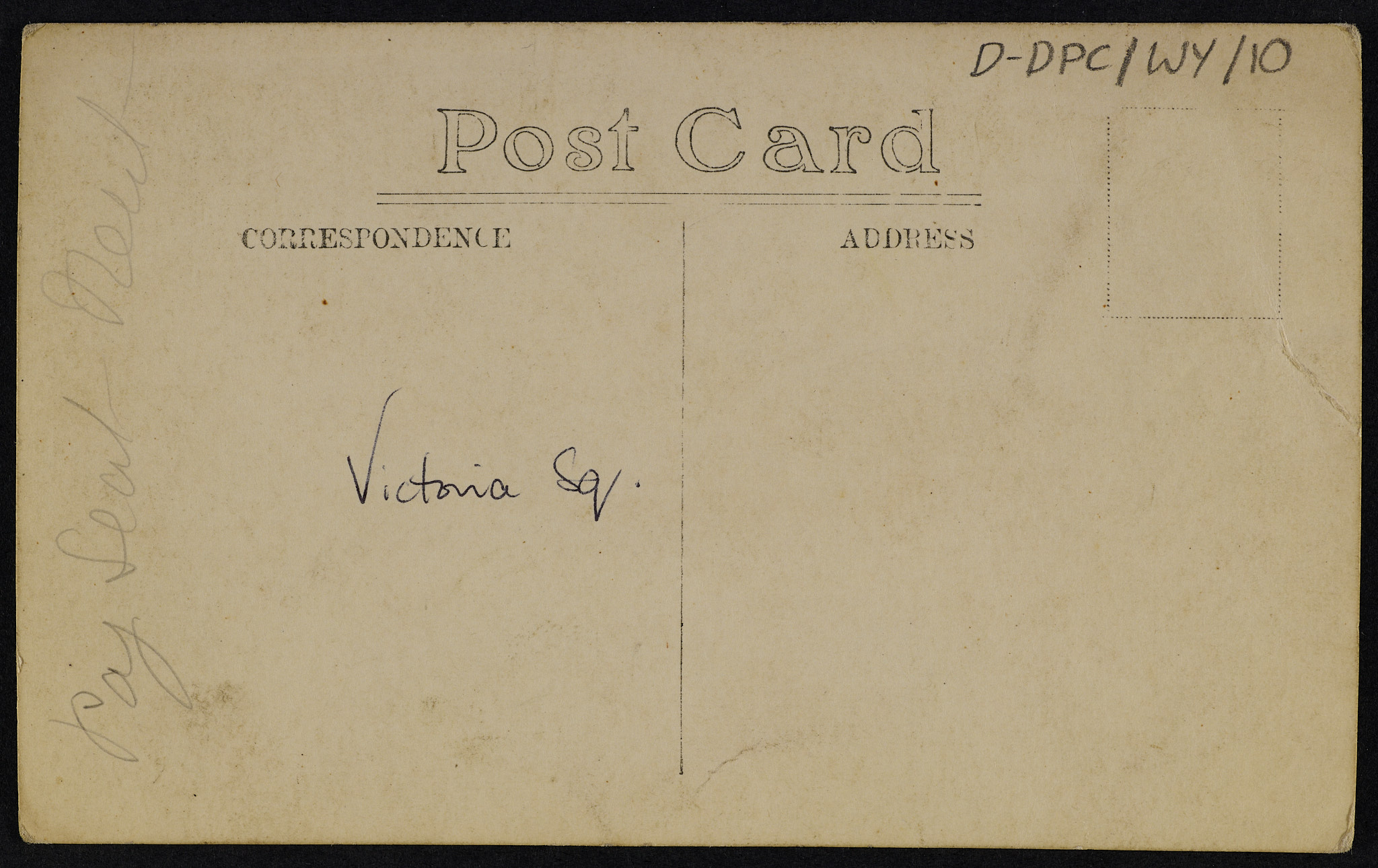A few months ago, we kicked off our postcard blog series with a selection of postcards from Bournemouth. This month, we’re focusing on another of Dorset’s tourist hotspots: Weymouth.
Weymouth’s rise as a fashionable seaside resort began in the second half of the eighteenth century, helped by the endorsement of King George III, who visited the town regularly in the belief that bathing in the sea would bring about good health. With the advent of the railway in 1857, Weymouth gradually transformed from a genteel health resort to a family holiday town, as the masses flocked to the seaside to enjoy short breaks and day trips. As can be seen in the postcards below, the town remained a popular holiday destination throughout the 20th century, and it continues to draw thousands of visitors to Dorset today!
—
D-DPC/WY/100 – Sent in May 1913, this postcard shows the original Pavilion theatre, which was opened by the Earl of Shaftesbury in December 1908. Hosting live shows and screening films, it was a popular venue in the town in the early 20th century. Later, during WWII, it was used as a headquarters building by the Royal Navy and United States Navy operating from the harbour. It reopened in 1950 as The Ritz but was tragically destroyed by fire in 1954.
—
D-DPC/WY/83 and 97 – These two postcards show the esplanade at the beginning (left) and end (right) of the 20th century. There are some obvious differences – the buses, the traffic lights and the deckchairs in the later postcard all stand out. But its also clear that much of the town, particularly the buildings along the seafront, remained largely unchanged throughout the century!
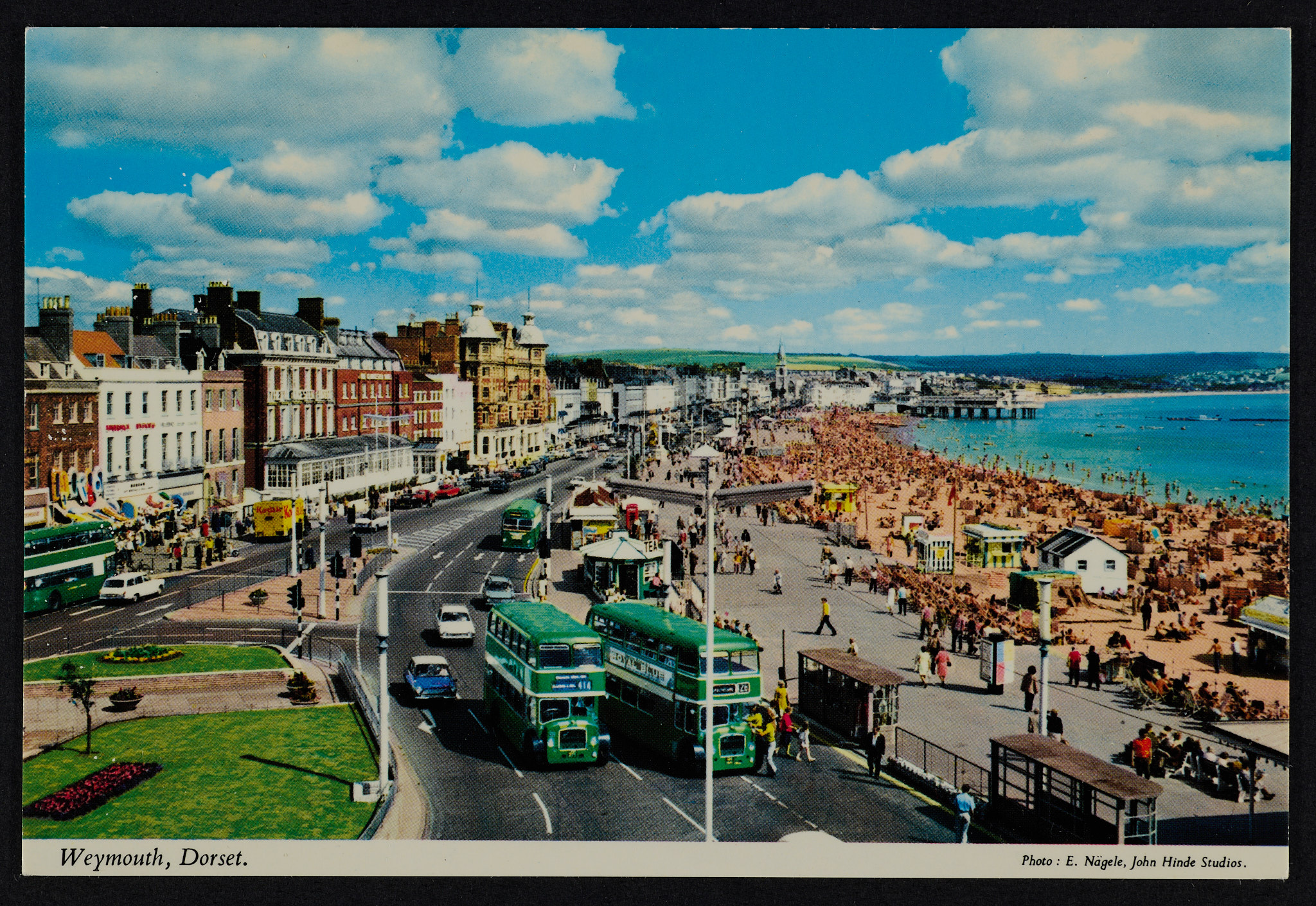
The earlier card was written on 16th September 1914 and addressed to Private W. Gritten. The message reads
“Dear Willie. Just a card cannot afford letters in war time. I see by your letters you are a real soldier of the King now. Hurry up and get some stripes put on that uniform. Will write later. With love from Bessie and Harry.”
—
D-DPC/WY/90 – You might have noticed that one of the differences between the two cards above is the Pier Bandstand, visible in the later image but not the earlier one. This controversial structure, shown in this postcard from the early 1970s, was opened in May 1939. It became a popular venue for all manner of entertainments but by the 1980s it had become very costly to repair. It was demolished in 1986.
—
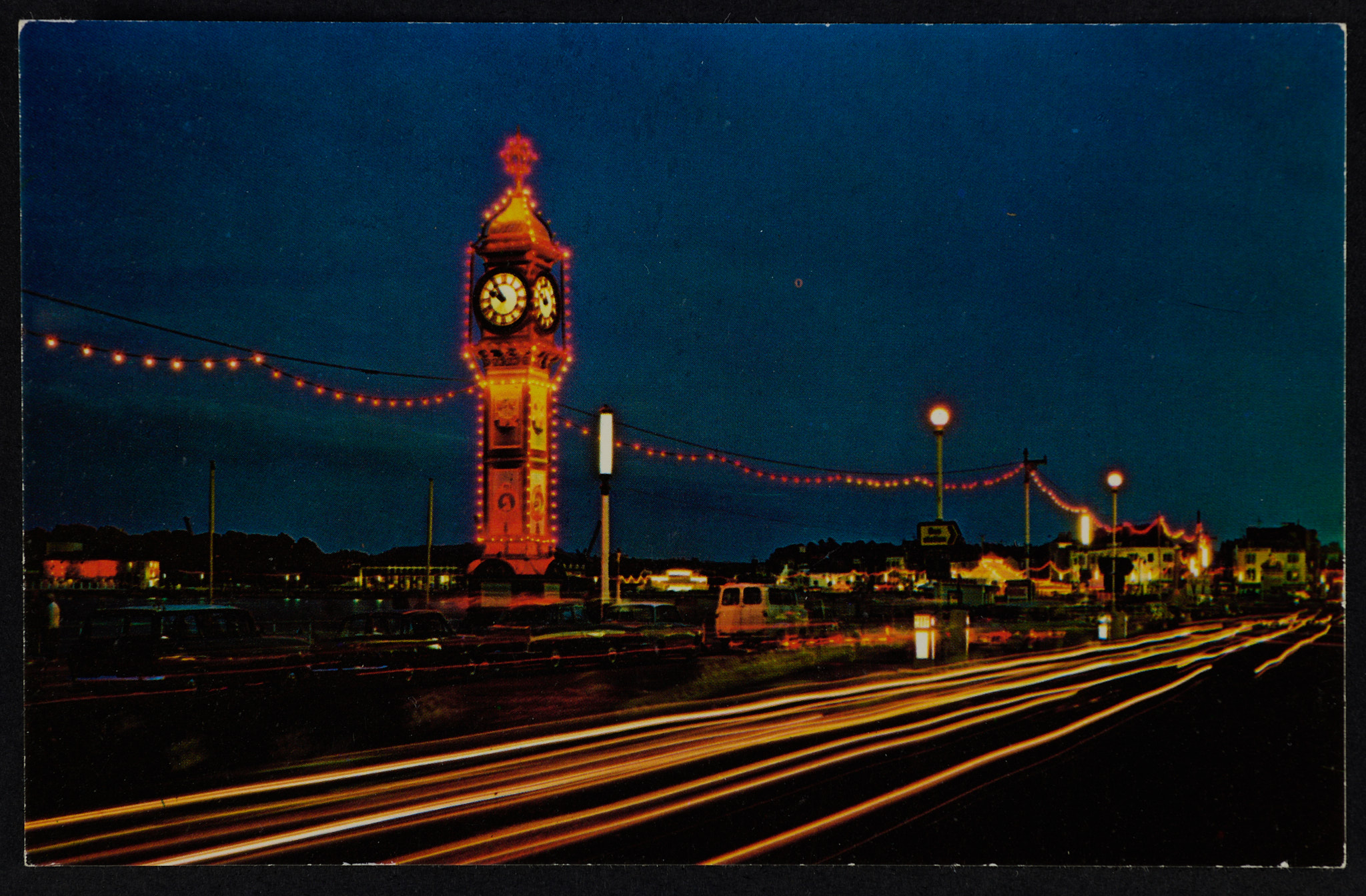
D-DPC/WY/62 – One of the most recognisable features of Weymouth’s esplanade is of course the Jubilee Clock. This structure was unveiled on 31st October 1888 and was intended to commemorate Queen Victoria’s Golden Jubilee. Seen in this postcard illuminated by colourful lighting, it was actually rather drab in its early days – it wasn’t until the 1920s that it was first painted in bright colours.
—
D-DPC/WY/73 – Another recognisable Weymouth monument, the King’s Statue, was unveiled on 25th October 1810. It celebrates the 50th year of the reign of King George III, himself a regular visitor to Weymouth. As can be seen in this postcard, sent in 1905, there was once a large open space in front of the statue where crowds congregated to celebrate special occasions. The traffic islands and gardens that now sit in front of the statue were first laid out in 1955.
—
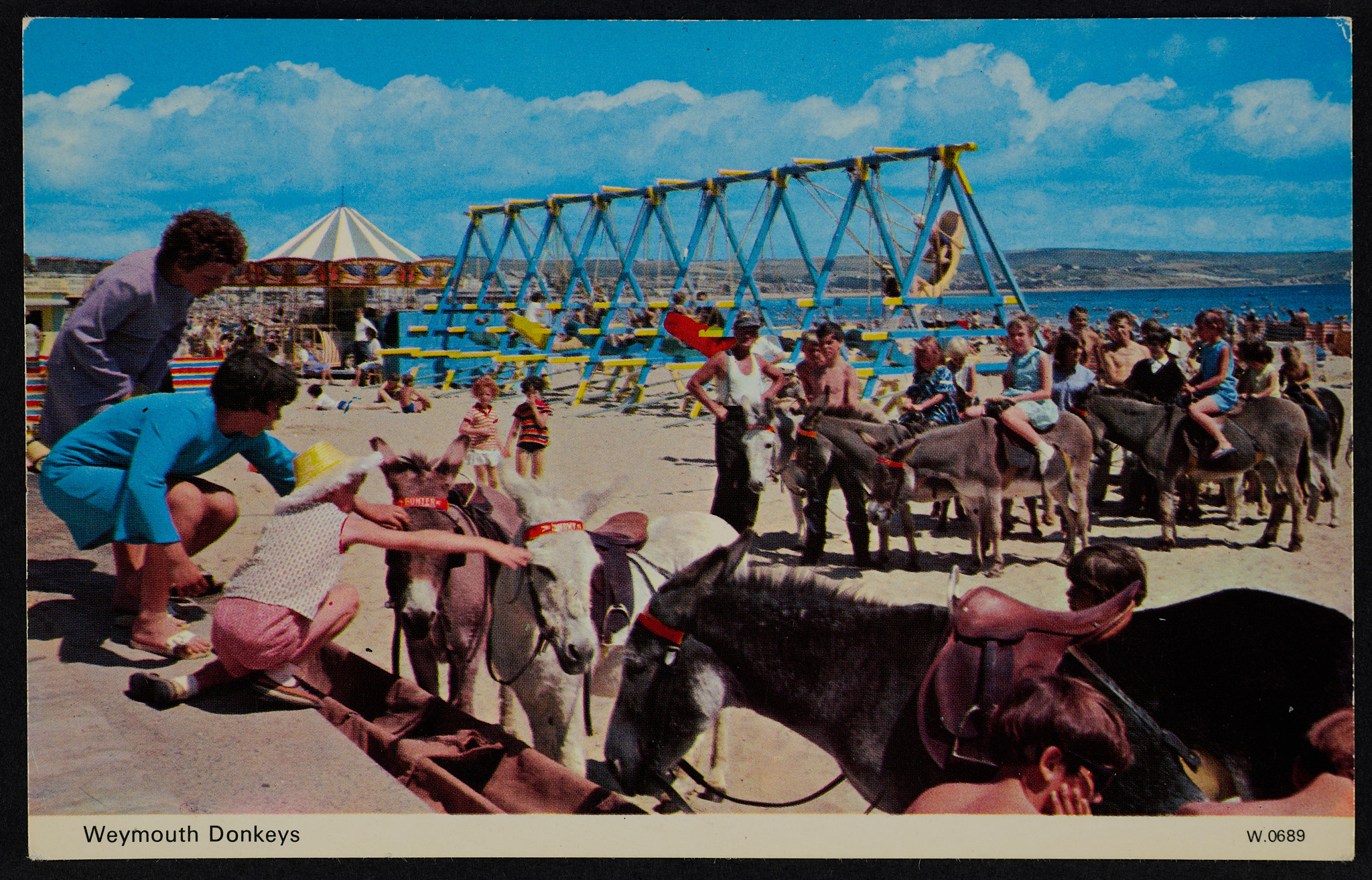
D-DPC/WY/64 – This colourful late 20th century postcard really needs no explanation. It shows the donkeys and swing boats on Weymouth beach, still popular attractions for tourists today!
—
D-DPC/WY/38 – Jumping back in time again, donkeys can again be seen on the beach in this postcard from the early 20th century. You’ll also notice the wheeled bathing machine visible in the foreground of the image. Very popular in Victorian times, these contraptions were pulled into the sea to allow people, particularly women, to bathe modestly! The larger gentlemen’s bathing saloons can be seen on the right. It was cheaper to higher a cubicle in one of the saloons than it was to higher an individual machine.
—
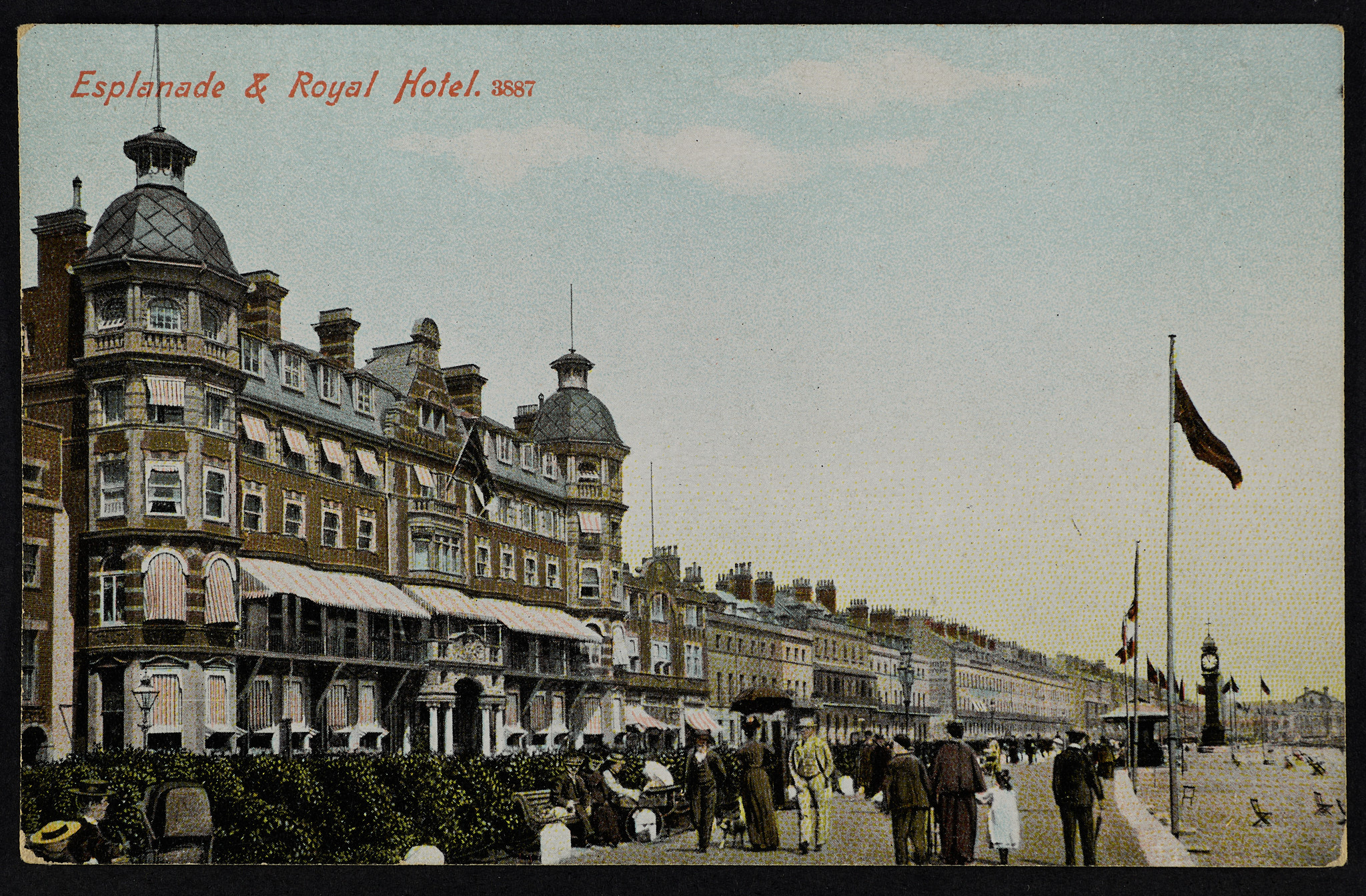
D-DPC/WY/67 – The original Royal Hotel was built in the early 1770s by a developer from Bath. It operated for over 100 years before being demolished in 1891, when the Weymouth Corporation decided that the bow-fronted Georgian building was out of date. The new Royal Hotel, shown in this postcard, opened in 1899.
—
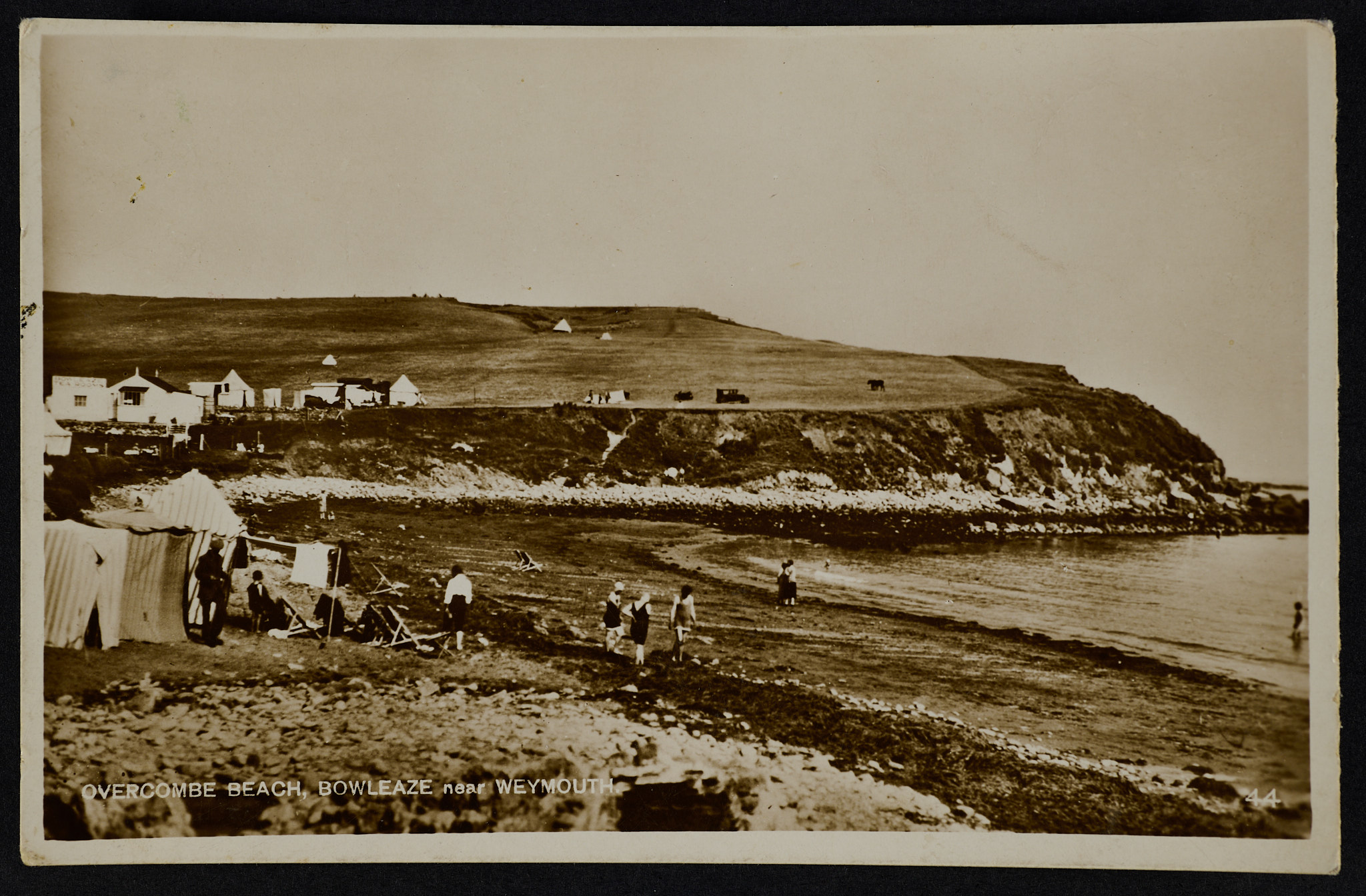
D-DPC/WY/12 and 35 – These two postcards show Bowleaze Cove before and after the construction of another of Weymouth’s iconic hotels, the Riviera.
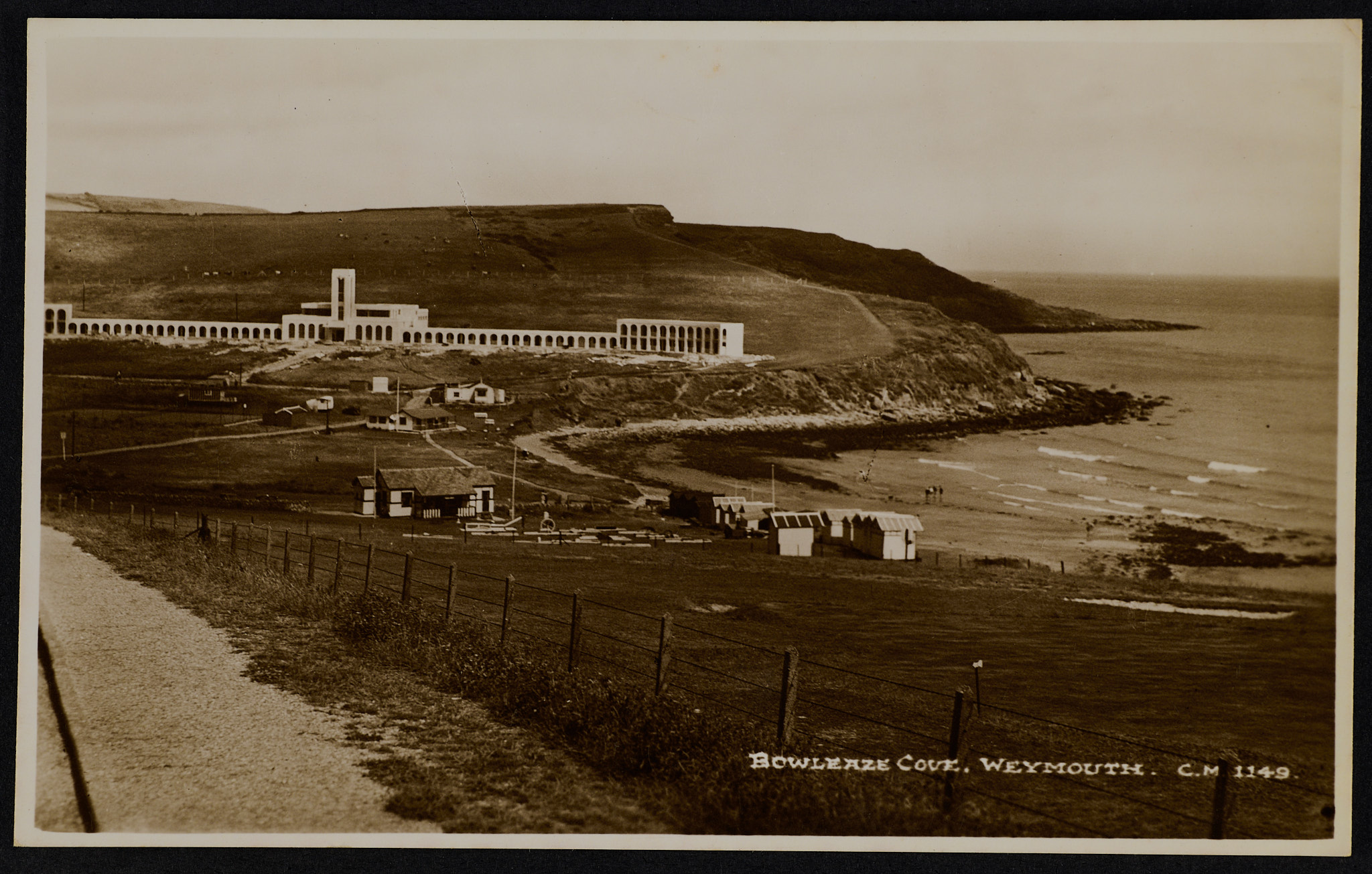
Designed by Weymouth architect Lionel Stewart-Smith, this modernist building was constructed with reinforced concrete and in 1997 gained listed building status as an important example of the architecture of its time. It was finished in 1937, but its opening was delayed as the original owner had been declared bankrupt!
—
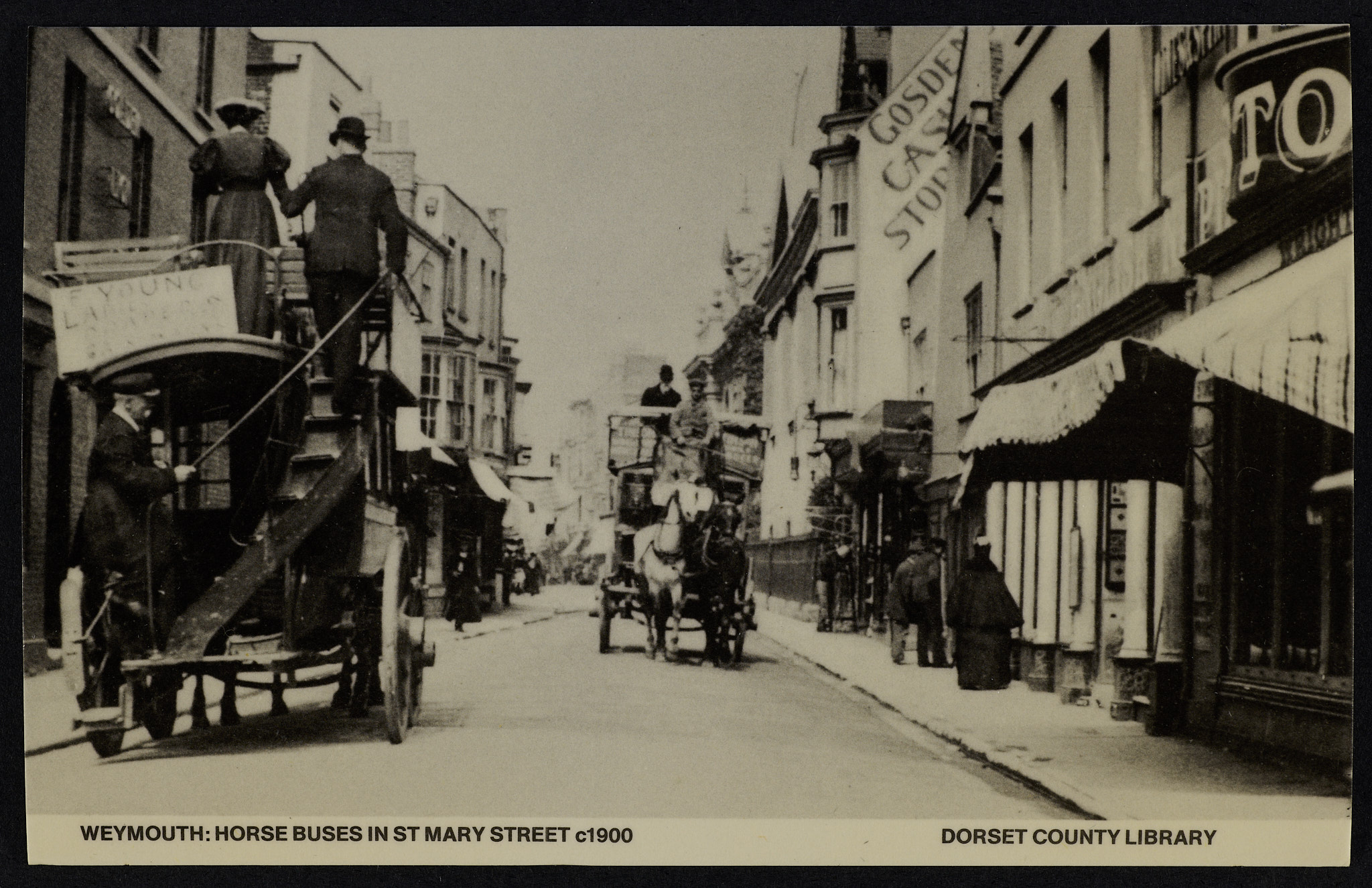
D-DPC/WY/10 and 78 – These next two postcards show examples of some of the modes of transport visitors to Weymouth might have used in the early 20th century – horse-drawn buses and charabancs.
The latter – essentially an early form of tour buses – began operating in the years before WWI and gradually took over the excursion trade from horse-drawn vehicles.
—
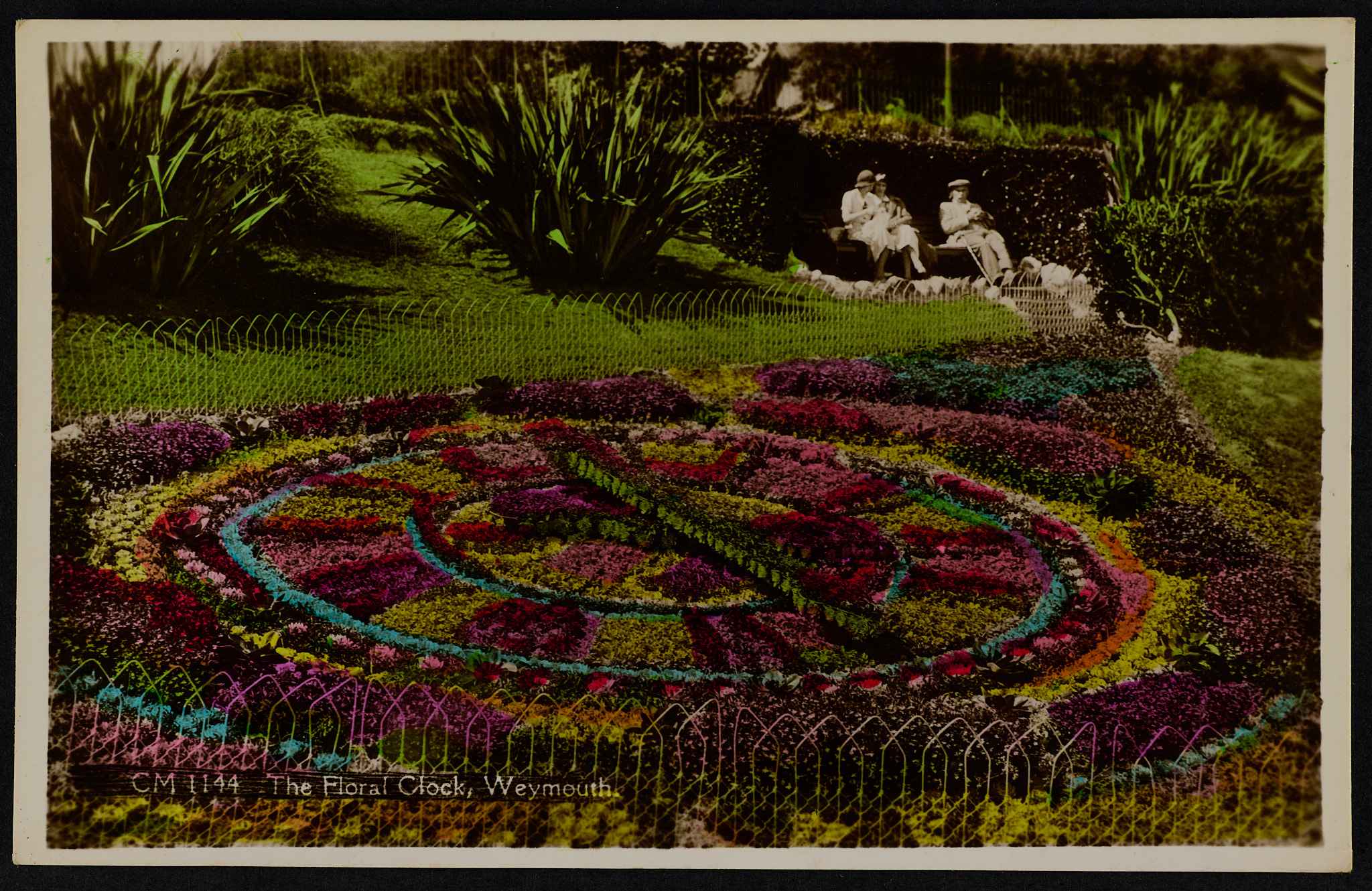
D-DPC/WY/48 – Finally, this postcard shows Weymouth’s floral clock, installed in 1936. It sits in Greenhill Gardens, which were opened in 1872 by Sir Frederic Johnstone, whose family had long represented Weymouth in Parliament. The gardens were presented to the town in 1902.
We hope you’ve enjoyed a look at some of the fun and fascinating postcards from Weymouth! Stay tuned to the blog for some snapshots from other parts of the county, coming soon!


